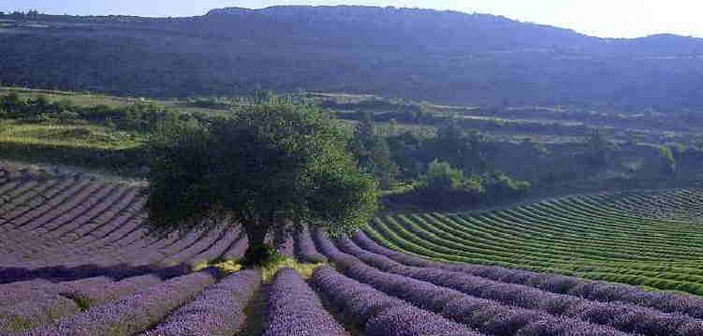The song of cicadas, fields with well-ordered rows of lavender, an omnipresent sun, a clear light, and an unmatched azure sky, we are in Provence. Our journey begins in Crest, at Die.
We leave behind the Alps and the Vercors, following the leisurely Drôme to reach Vaison la Romaine and the Vaucluse. In the Comtat Venaissin, we primarily find lavender. The Ventoux, this giant of Provence, towers over us, peaking at nearly 2000 meters.
We arrive in Noyons, tasting olive oil, then it’s on to Montélimar and its nougat. We mix the pleasures of the senses and even those of the flesh, embracing the metaphor of making love with nature. Soon Sisteron and its inevitable roasted lamb, and the Ouvèze with its apricots. The song of the cicadas would start here; as night falls, a sky studded with stars is accompanied by the chirping of crickets.
We had followed the Drôme, and now it’s the more tempestuous Durance, a tributary of the Rhône, the master of rivers that is never thirsty! Carpentras and its melons competing with those of Cavaillon, Forcalquier and Manosque where Jean Giono, speaking of lavender, explains that it is the soul of Provence.
Thyme and rosemary vie here with lavender for the land and the scrubland. We leave, not without regret, the citadel of Sisteron to join Digne, the capital of lavender, a city with two cathedrals on the Bléone.
Our journey takes us to Barrème, where the refined lavender was once sent by the Pignes train to Grasse. We take the Napoleon route and successively pass through: Senez, Castellane, and Saint Vallier de Thiey.
We overlook the coastline, the Mediterranean, in hues of mauve, marine, and emerald, appears with a jagged shore of capes, coves, and the Lérins Islands guarding Cannes. This marvelous panorama stretches at our feet. We arrive in Grasse, the end of our journey, where perfume has its museum and its perfumeries.
Thierry Jan


